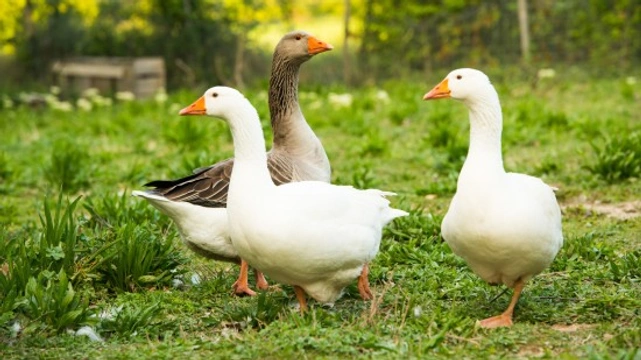
How and When to Pair Ganders and Geese
Keeping geese is becoming more popular than ever and as long as you have enough outdoor space, they not only make wonderful guard dogs, but they can help keep grass under control without making a mess of it too. If you are new to keeping these large birds, the good news is that they are relatively healthy birds which don't suffer from many of the illnesses and diseases that afflict other types of water bird and poultry.
It's always better to keep geese in either pairs, small or large flock and as December fast approaches, it's that time of the year when the colder weather and the shorter days makes looking after animals a little tougher all round. However, if you are hoping to keep geese, mid December is the time of year when breeders start pairing their birds up ready for the mating season the following spring, which makes it the best time to buy geese in.
A lot of people like to keep one gander and two or three geese and this is especially true if you are planning to keep heavier breeds. If you have set your heart on lighter breeds however, you might like to consider putting either four or five geese with one single gander. Breeders usually try to have their mating pairs set up by mid January in Northern hemisphere countries so the group are used to being with each other in their environment before the mating season gets under way in the spring.
Introducing a Gander to Geese
Ganders when first introduced to geese will normally be okay with the females and things tend to go pretty smoothly. However, if you already have a flock of birds, and are thinking about introducing any new stock, this can be a little problematic. The rule of thumb if you are not buying in breeding pairs, is to get your females first and to let them get used to each other before bringing a gander into the flock.
Unlike with chickens where it is best to give your birds as much space as possible when introducing any new birds into a flock, the reverse is often true when it involves geese. The best way of introducing new stock into a flock of geese is to take the gander away and to put the females in a more confined space. This seems to work well when it comes to encouraging the females to bond with each other than if they are left in more open spaces.
Females for some reason are far less likely to fight with each other if they are kept in a smaller area than they would if they had more area to roam around in. After two weeks or so, you can let them out as a group in their usual environment. However, you should wait a few more days before re-introducing the gander back into the flock and keep a close eye on things to make sure he accepts his "ladies" and that none of the birds start fighting with each other.
First Year Matings
When spring arrives and the mating season begins, you may find that the first year is not always that good and incubated eggs are harder to hatch. If any goslings do hatch out, whether in an incubator or under the goose, they can be quite weak birds. Again, the rule of thumb is that first year ganders don't tend to mate as much as a second year gander, which is another reason why it is so hard to hatch any eggs out. With this said, you should not be too disheartened because it's in the second year that results start to happen and that a gander's fertility seems to be that much better.
Keeping Several Ganders Can be Problematic
If you end up with a large flock of geese that includes several ganders, they might start fighting with each other, but this should not be too much of a problem as long as they are the same size and well matched. If ganders grow up together, they don't normally fight and if they do, it would be far less than birds that are introduced to each other when they are older.
Geese Mate on the Water
You have to bear in mind that geese much prefer to mate when they are on the water and although you can keep these large birds on land without a deep pond or other body of water, you might find your birds don't mate and therefore their eggs will not be fertile. This is especially true of the heavier breeds. Having access to deeper water not only allows the birds to mate property, but it also means they keep their feather in much better condition so if a female does sit on her eggs, they are kept that much cleaner and therefore this reduces the risk of any infections in goslings.
Conclusion
Geese are large birds and they can be a little aggressive if you don't get them used to being around you when they are young. They make fantastic guard dogs and will soon let you know when there is someone or something around. With December fast approaching, it's the time of the year when breeders start matching and pairing their birds up ready for the mating season next spring. This is because the geese need to get to know each other and that ganders accept their mates. Introducing the birds early helps them establish a strong bond with each other which is important when it comes to the mating season.



